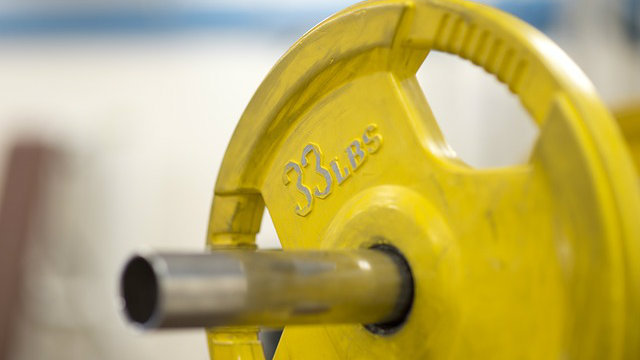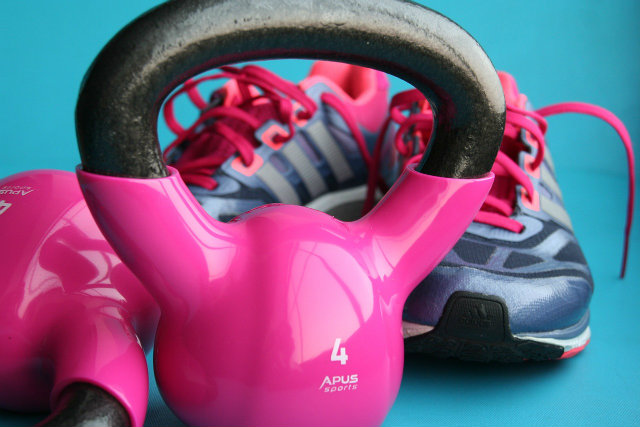 Reading Time: 6 minutes
Reading Time: 6 minutesTrying to find a workout routine that fits into your already packed schedule can be challenging. When faced with this dilemma, many of us attempt to solve the problem by choosing either cardio training or strength training. And not without precedent — even within the fitness world, you have people who swear by cardio and those who love to pump weights.
Which is actually best for weight loss, health benefits, and overall fitness?
Both.
The truth is fitness is about balance. You need a balanced diet and a balanced workout. This is why both forms of training are important, and the best workout programs include a dose of strength and a dose of cardio.
Here’s a look at the science behind why both strength and cardio training can make long-term differences in how you look and feel, plus some tips on how to incorporate them into your busy schedule.
The Benefits of Cardio
Regularly engaging in cardiovascular exercise, such as swimming, cycling, or walking, can improve your health and help you live longer. When you engage in cardio, you move the large muscle groups in your body and the body responds.
You start breathing faster and more deeply, which maximizes the oxygen in the blood. The heart beats faster to increase blood flow to your lungs and muscles. The small blood vessels widen, ensuring your muscles get more oxygen and helping to eliminate waste products, including lactic acid and carbon dioxide.

No matter your athletic ability, weight, or age, cardio offers great benefits:
- Studies show cardio is an excellent way to lose weight or maintain a healthy weight, particularly in adults who are obese or overweight.
- Regular cardio can also help lower your risk for serious health conditions, such as high blood pressure, certain types of cancer, and obesity. Recent studies published in the American Journal of Cardiology show cardio also has the ability to reduce the risk of heart disease and metabolic syndrome.
- If you already have chronic health conditions, such as coronary artery disease, diabetes, or high blood pressure, cardio can help you manage these conditions effectively.
- Cardio may also help boost mood, reducing anxiety, promoting relaxation, and even reducing depression. Psychology Today cites multiple studies that show aerobic activity is an excellent treatment for mild to moderate depression.
- When you engage in cardio regularly, it helps build a stronger heart. When your heart is stronger, it can pump more blood with every beat, reducing your heart rate when you’re at rest and during exertion.
- Since cardio builds strong muscles, it can reduce the effects of aging, helping you stay fit and mobile as you age. It can even protect your memory and cognitive function, and studies suggest it may prevent dementia in older adults.
The Benefits of Strength Training
Strength training includes any type of exercise that helps our muscles become stronger and more powerful. This can be done with weights or elastic bands, but it can also include exercises that make use of your own body weight, such as squats and push-ups.

Benefits of adding strength training to your workout routine include:
- According to Harvard Health, strength training can help slow bone loss and even build bone, reducing the risk of osteoporosis. During strength training, the stress that comes with pushing and pulling helps build stronger, denser bones, particularly targeting those that are most likely to fracture as you age.
- As you build muscle with strength training, that extra muscle burns more calories. This can increase your metabolism and aid in weight loss and weight management.
- Strength training may reduce some of the symptoms and signs of chronic health conditions, such as depression, diabetes, obesity, and back pain. Danish studies have shown it is effective at reducing neck pain, and a recent study called Strength Training for Arthritis Trial found it’s especially beneficial for older adults experiencing arthritis pain, specifically knee osteoarthritis.
- Regular strength training may resolve metabolic disorders, and a study published in the Journal of Strength and Conditioning Research reported that lifting weights may help prevent metabolic syndrome.
- Even your mental health may benefit from strength training. Researchers have found that strength training can improve brain cognition, reduce anxiety, reduce depression, boost self-esteem, and improve overall mental health.
2 Tips for Maximizing Your Training
So ask yourself — are there really any of those benefits listed above that you don’t want?
The value of training both strength and cardio becomes pretty clear once you look at the science. To maximize overall fitness and health, you need to add both of these types of training to your life.
Which brings us back to the fact that we’re all busy people and it’s not easy to fit everything into the day, much less a workout. Here are two tips for getting the most out of every training session:
- Doing compound exercises can be more beneficial than using the gym machines or doing traditional bodybuilding movements. Compound exercises include things like barbell deadlifts and squats of just about any kind. Kettlebell swings are great, as well. These exercises use more muscles at one time, increasing your exertion while also honing your stability and coordination.
- Intervals and circuit training often include both strength and cardio exercises. This approach can be efficient at improving weight-loss results due to the increased intensity levels. But the biggest benefit of these workouts may be the minimal impact they have on your schedule.

A Sample Strength and Cardio Combo Workout
Here’s a straight-forward routine that incorporates both strength and cardio. If you’re a beginner, remember to scale the exercises appropriately. For example, if jumping doesn’t feel good or safe, just do regular squats instead of squat jumps or walk your feet out in your burpees instead of hopping.
Try this workout on a treadmill or outdoors. Move straight from one thing to the next as best you can, but always prioritize the quality of your movement over speed.
- 5-minute warm-up walk
- 90-second jog, medium pace
- 30-second sprint
- 10 push-ups
- 10 bodyweight squats
- 90-second jog, medium pace
- 30-second sprint
- 20 walking lunge (10 per side)
- 60-second plank
- 20 mountain climbers (10 per side)
- 90-second jog, medium pace
- 30-second sprint
- 10 burpees
- 60-second wall sit
- 10 squat jumps
- 90-second jog, medium pace
- 30-second sprint
- 5-minute cool-down walk
When it comes to the debate between cardio and strength training, the most important thing is to find a routine you can stick with for the long term. A smart combination of healthy eating, strength training, and cardio is as close to a magic health and longevity boosting bullet as you’re ever going to find.









